This post may contain paid links. See more info on my privacy page.
Using just three simple ingredients, you can make a simple, amazing homemade pasta recipe without a machine! I'll show you how to make pasta dough without a machine. All you need is eggs, flour, salt, and a rolling pin!
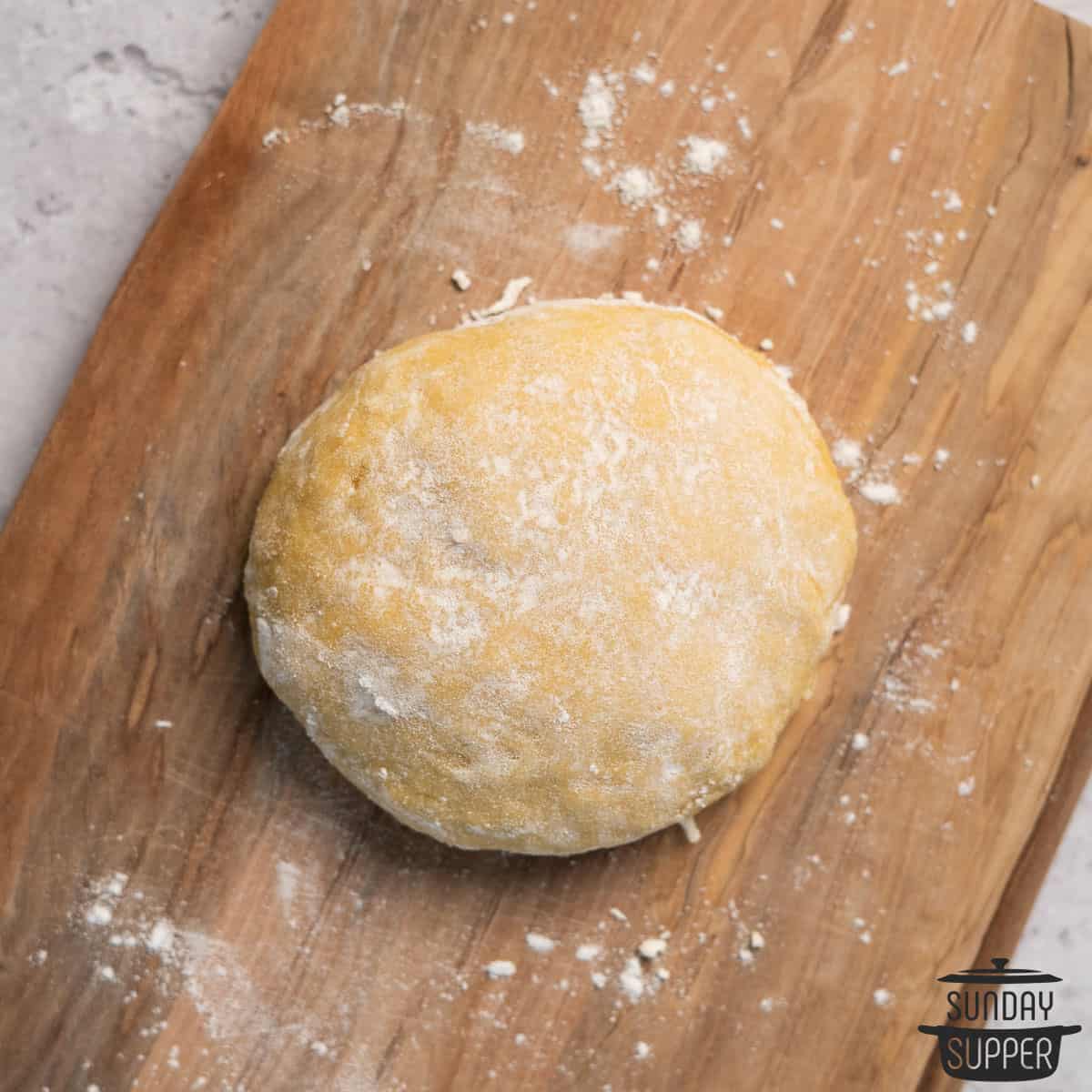
Jump to:
- Homemade Pasta No Machine
- Homemade Pasta Ingredients
- How to Make Pasta Without a Machine
- How to Cook Fresh Pasta
- Pasta Sauces
- Expert Tips for Making Pasta Dough
- How to Store Fresh Pasta
- How to Dry Fresh Pasta
- How to Freeze Fresh Pasta
- Homemade Egg Pasta Recipe FAQ
- What to Make with Homemade Pasta
- Homemade Pasta Recipe Without a Machine
- Reviews
Homemade Pasta No Machine
I'll be the first to admit that I'm stubborn. Once I set my mind to something, nothing can stop me! The first time I made homemade pasta, I had to learn how to make pasta dough without a machine. I've never forgotten the experience; it was so much fun, and the results were more delicious than any boxed pasta I'd ever had!
It reminded me so much of rolling out the empanada dough for Rissóis de Camarão with my mother. Now, one of my favorite activities is making homemade pasta dough with my grandkids! I'll show you how to make pasta without a machine. All you need is three simple ingredients, a rolling pin, and plastic wrap.

Homemade Pasta Ingredients
- Flour: There are three types of flour I recommend using for homemade pasta, each with their own strengths!
- Semolina Flour: Semolina is the classic for noodles, with a strong, hearty texture that helps keep the pasta firm and prevents shattering.
- All-Purpose Flour: The easiest to find of the flours, all-purpose has a great flavor but takes more kneading time to develop the gluten.
- 00 Flour: This super-fine flour has a silky texture that will result in incredibly soft, tender noodles with no grain whatsoever.
- Eggs: Eggs are what keep pasta noodles from shattering! Use quality large eggs if you can find them, such as pasture-raised. I find that the richer yolks improve not only the color of the pasta, but the quality of the texture, too.
- Salt: The only flavoring in pasta is just a touch of salt. It's all you need!
Making Homemade Pasta Dough
Pasta takes patience! The process of rolling out and stretching the dough can take a lot of time and arm power. Get your family involved and make it a group activity. It's a lot of fun, and kids love the hands-on aspect of making their own noodles!
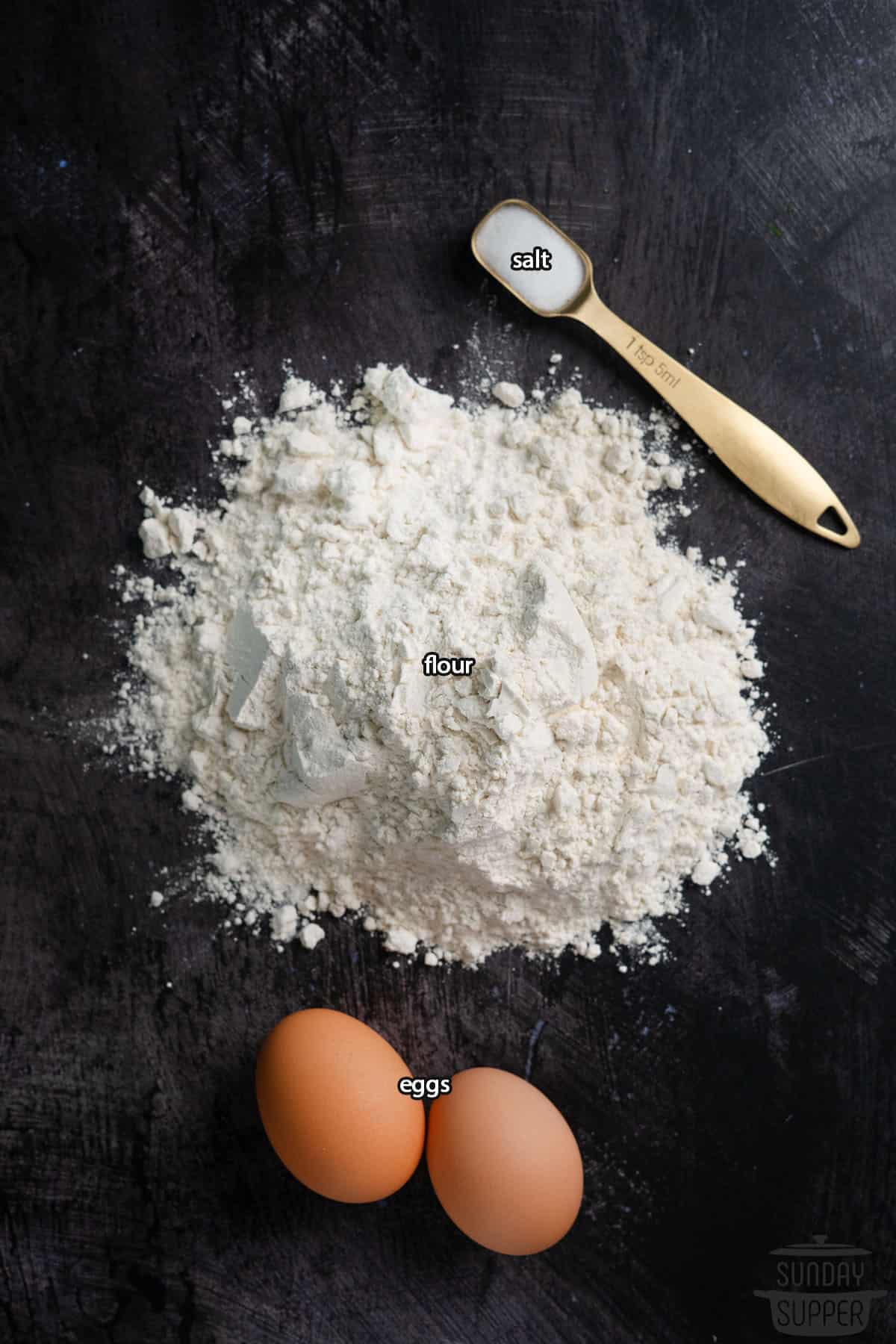
How to Make Pasta Without a Machine
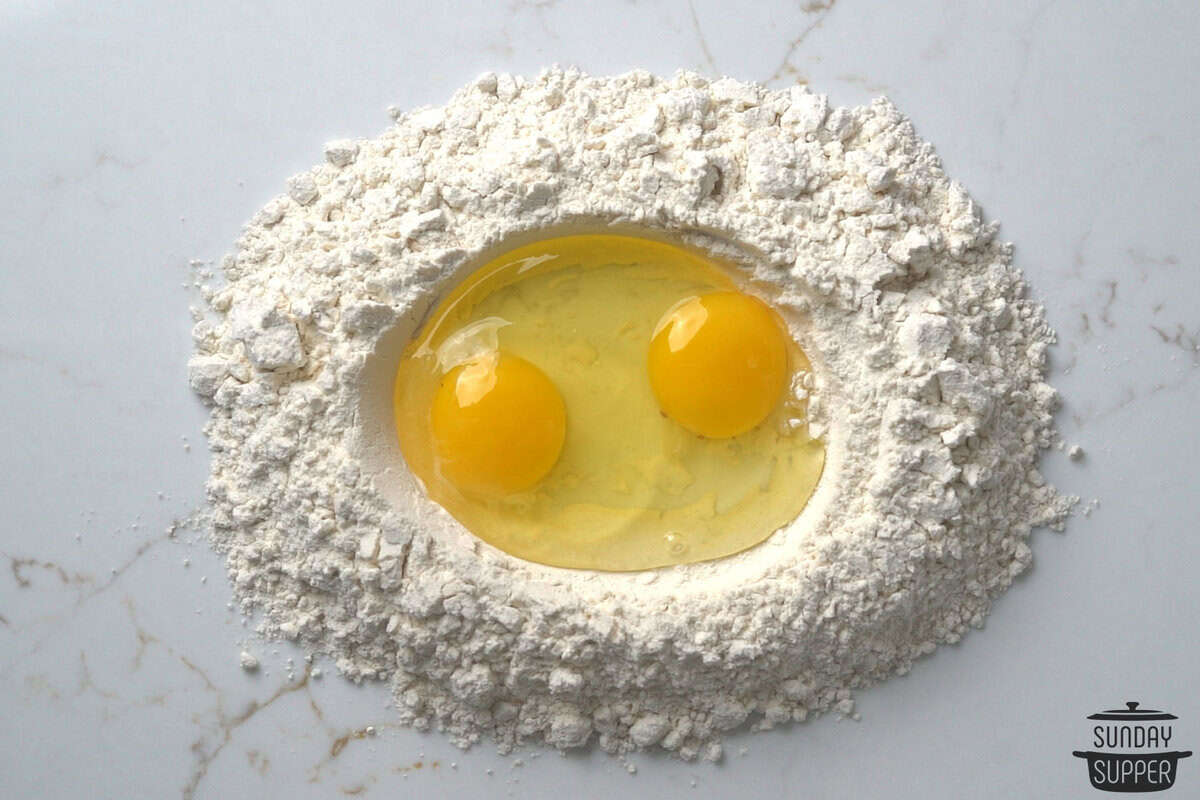
1: Assemble Ingredients!
Clean your work surface (a large counter or table is ideal) very well, then pour out the flour into a large mound. Form a well in the center, and crack in the eggs. Make sure they don't overflow!
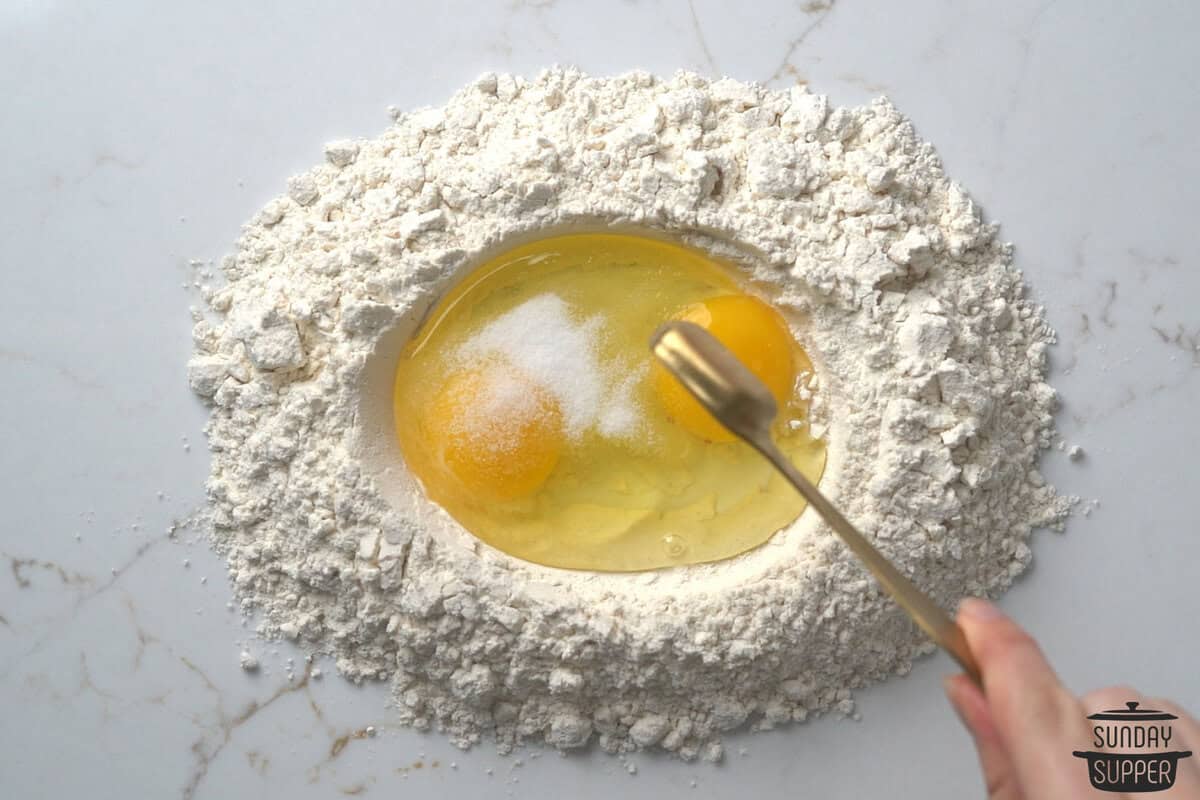
2: Add the Salt
Add the salt to the top of the eggs; you can also integrate it into the flour, either one works.
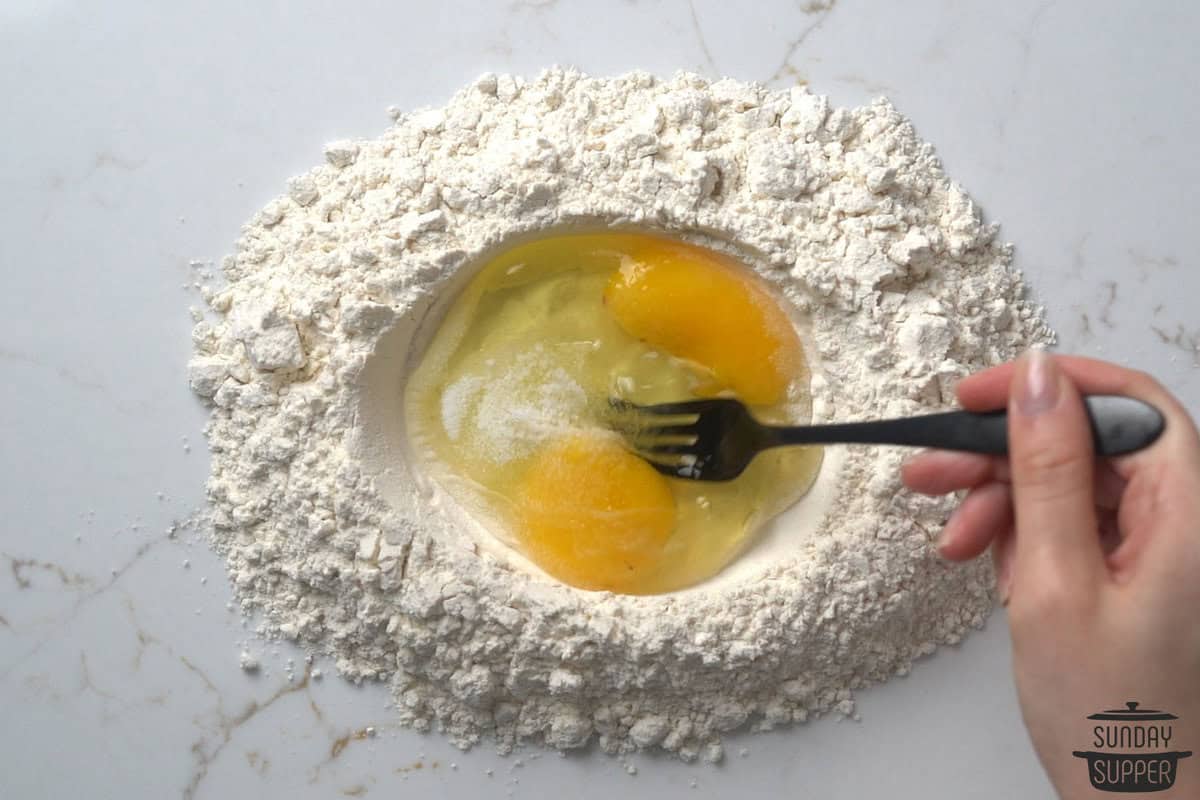
3: Mix the eggs
Using a fork, mix the eggs until the yolks are broken and the whites are well mixed in, trying not to start mixing in too much flour.
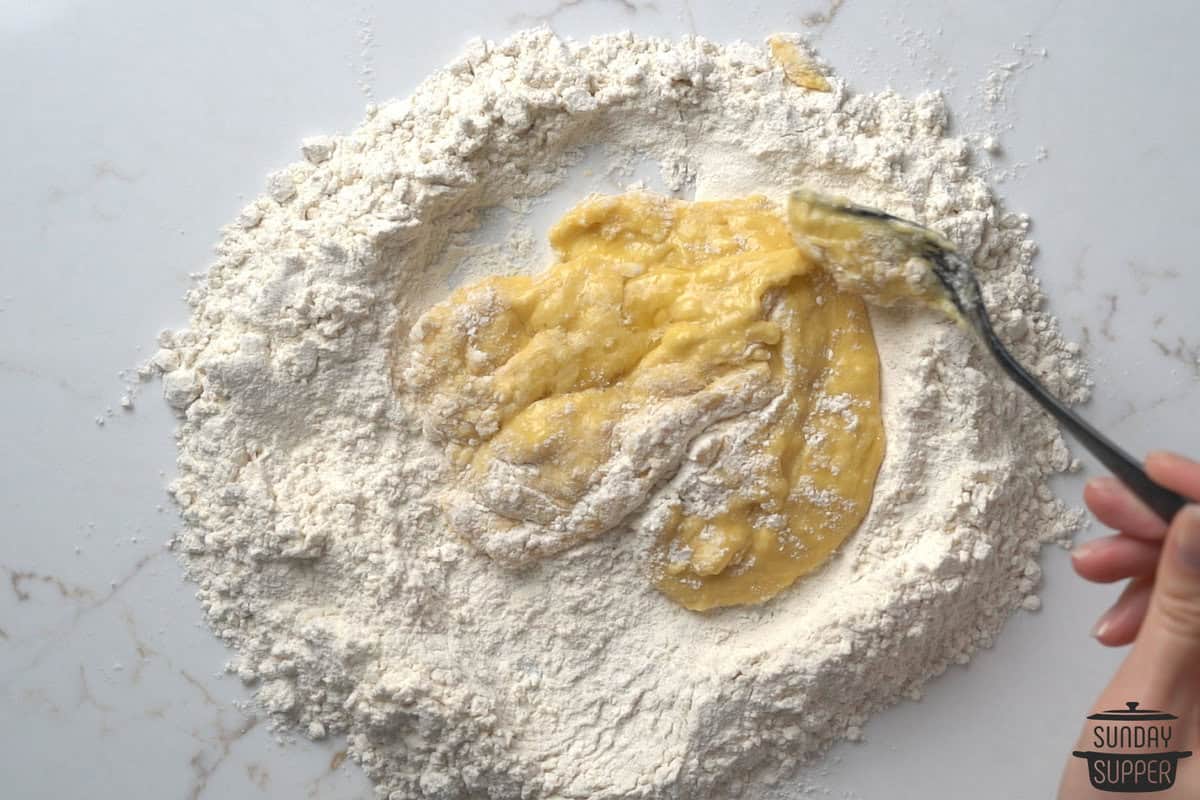
4: Start mixing in flour
Working gradually, slowly start whisking in some of the flour from the bottom and sides of the well, without letting the eggs start to spill out. Keep going until it's a thick dough and no longer wet.
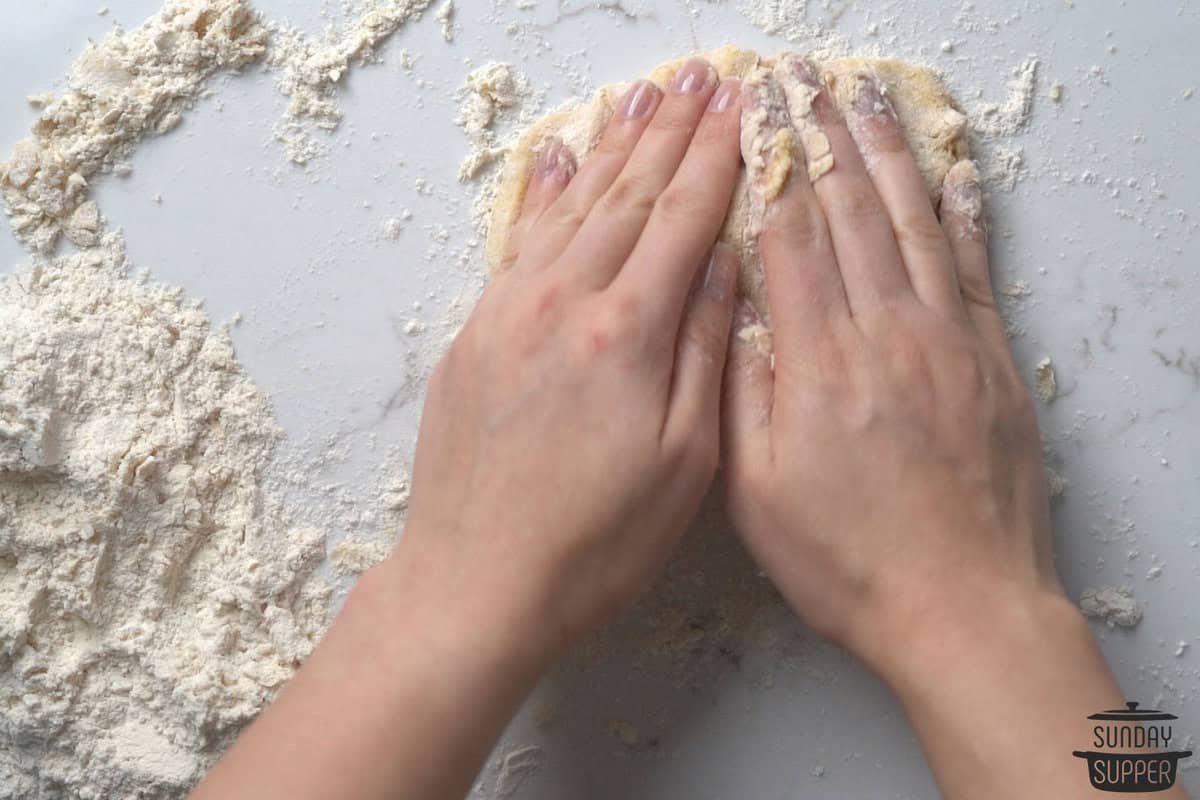
5: Knead the dough
Incorporating any leftover flour as you go, start kneading the dough with your hands until a ball forms. It will be firm; use your body weight to press down.
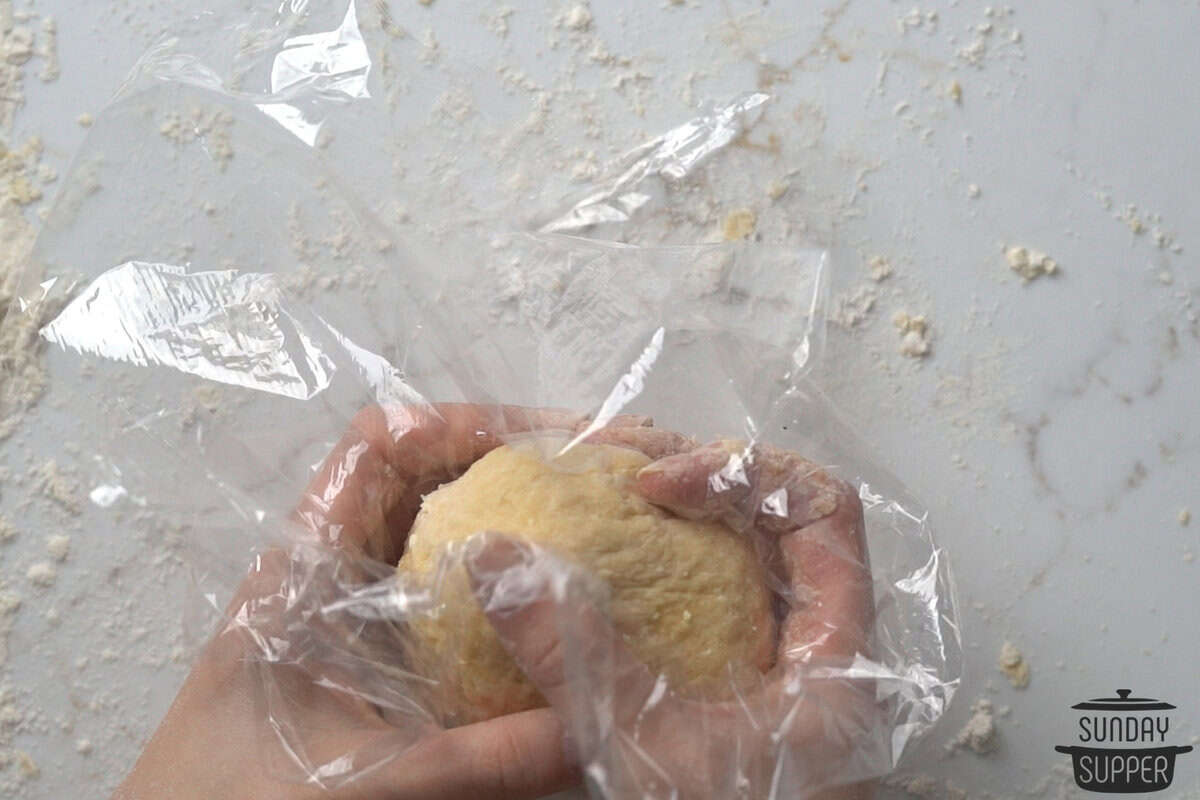
6: Wrap and rest
Wrap the ball of dough in plastic wrap, and let the dough rest for at least 20 minutes at room temperature. This is very important and will ensure the dough stretches without breaking.
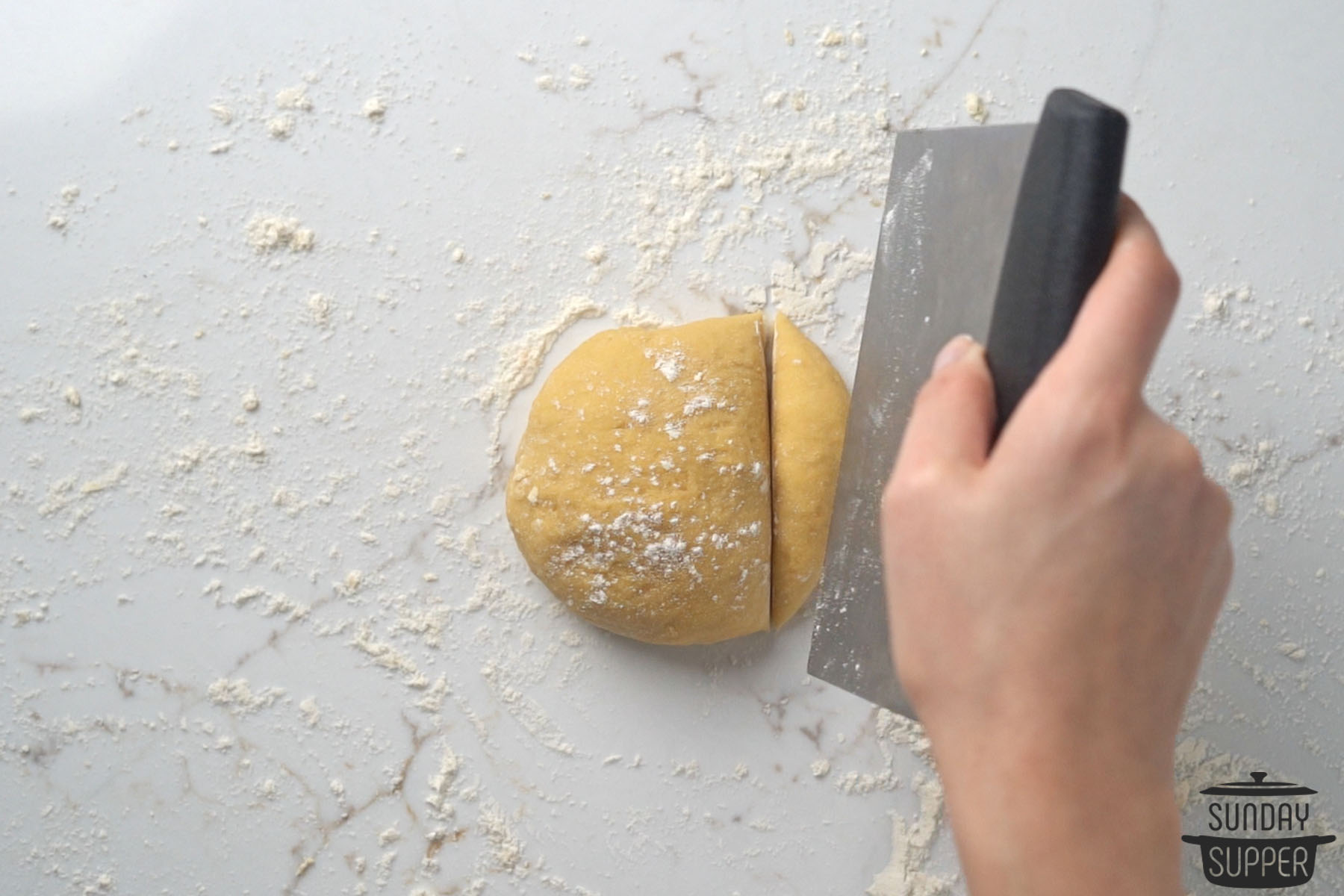
7: Separate the dough
Unwrap the fresh pasta dough, keeping the plastic wrap off to the side. Then cut off about ¼ of the ball, and wrap the rest up in plastic wrap again to keep it moist.
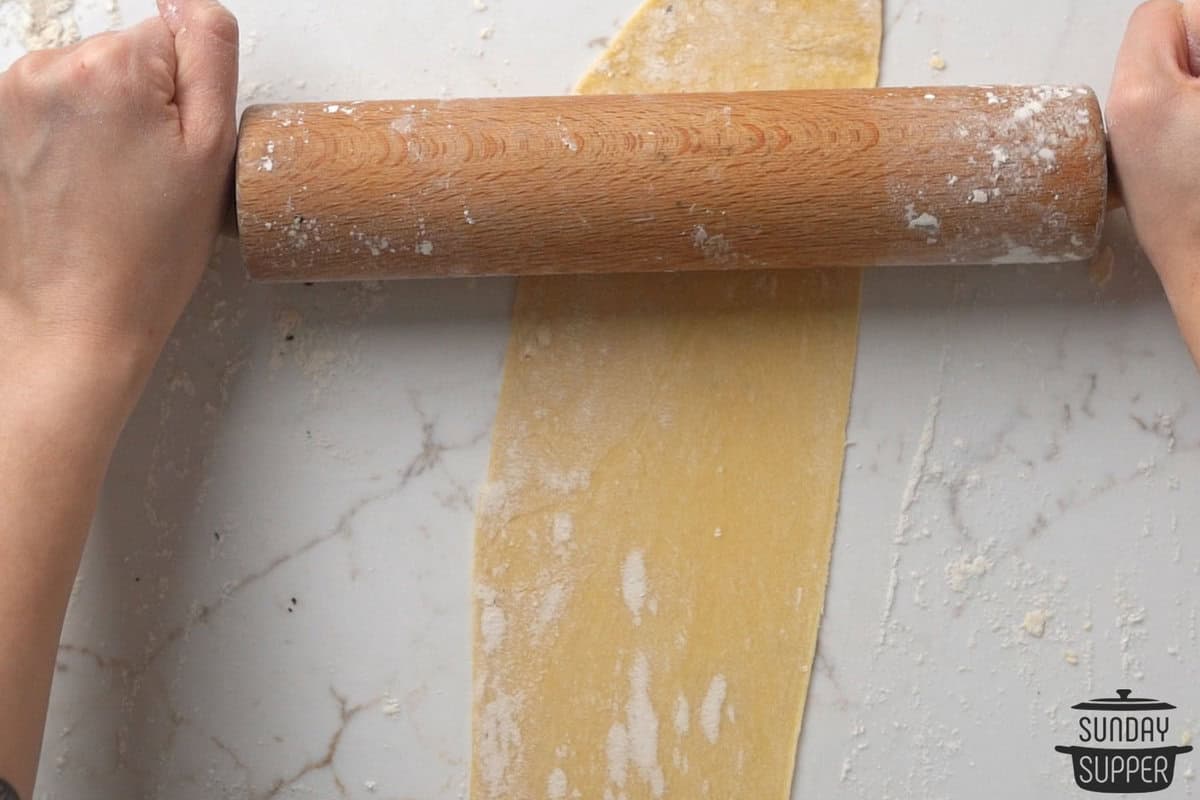
8: Roll until thin
Dust your working surface and rolling pin, and start rolling. This is the most time intensive step! Keep rolling, flipping it, stretching it, and rolling more. It will take about 30 minutes. Repeat for the rest of the dough. Make sure to wrap the rolled out pasta in plastic wrap!
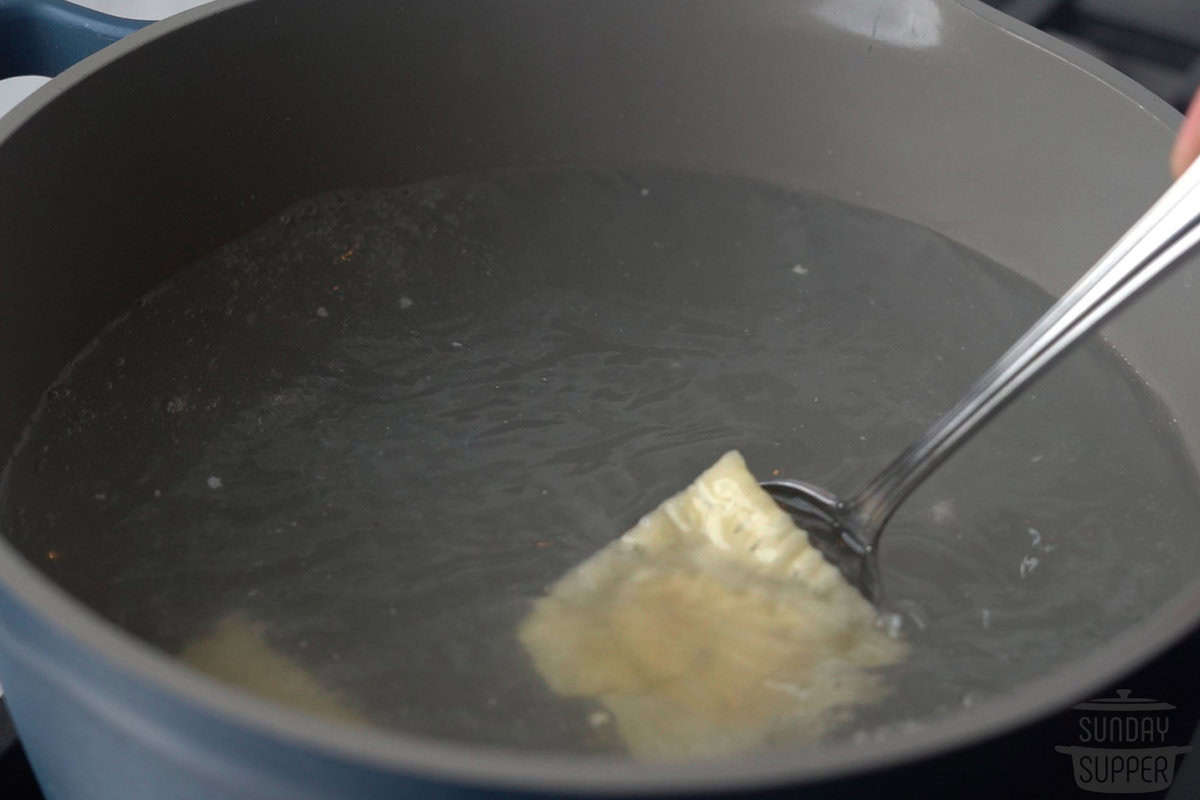
9: Shape and cook!
Cut the pasta into long strips using a sharp knife, pasta cutter, or pizza cutter. For your first time making pasta I recommend fettuccine, as it has a simple and forgiving shape. (I made Lobster ravioli!) Boil for 1-5 minutes, depending on the thickness of the noodles.
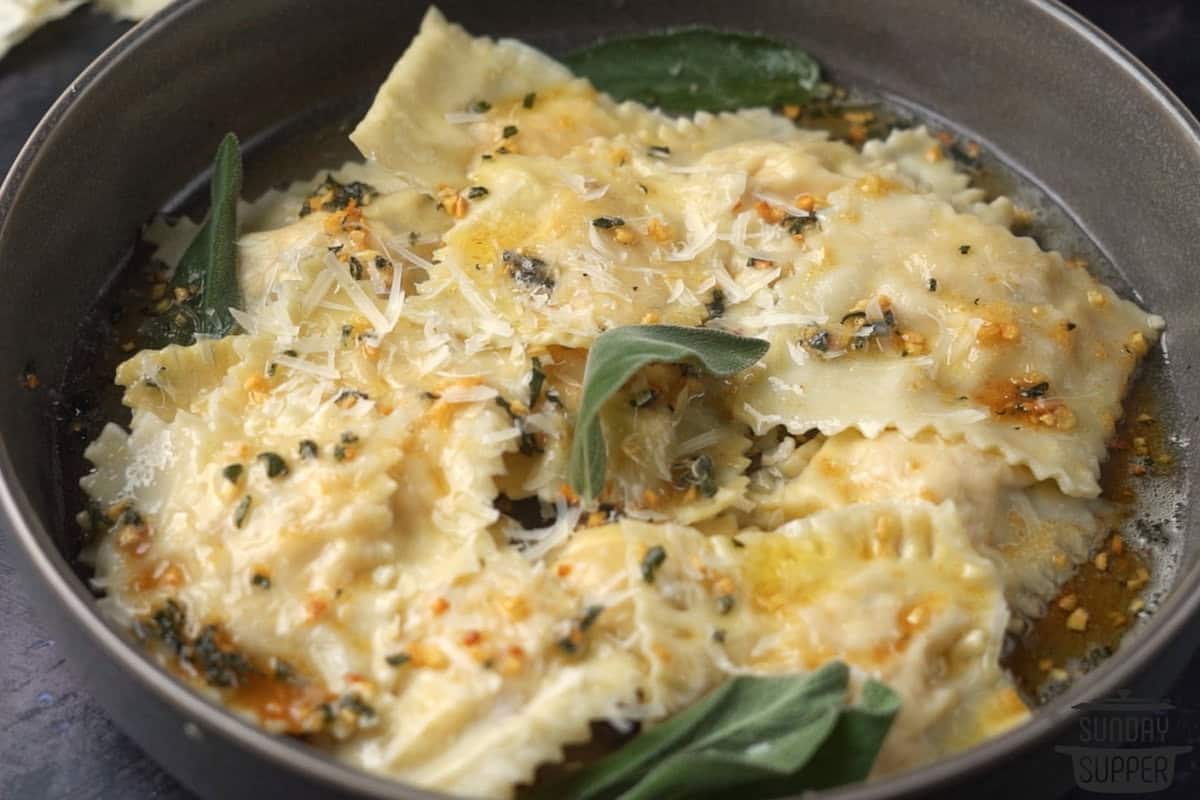
10: Serve with sauce!
Whip up your favorite pasta sauce, and serve right away! I've included a list of all my very favorite homemade pasta sauces.
This recipe assumes you don't have a pasta machine! If you do, you can skip the process of stretching and cutting the dough. Instead, just form the dough, roughly flatten it, then use the pasta roller attachment on your pasta maker on the widest setting to roll it out and the pasta slicer of your choice to cut it.
How to Cook Fresh Pasta
Once you're all done shaping the noodles, it's time to cook the pasta! Cooking it is the same as dried, but for far less time. Just boil salted water, then add in the fresh pasta for 1-5 minutes, depending on the size of the noodle. Strain, serve, and enjoy!
Expert Tips for Making Pasta Dough
- Making pasta is messy! Flour gets everywhere, so make sure you wear an apron and get ready to clean the counters. Embrace the mess and have fun!
- Clean the working surface and your rolling pin well! You won't be working on a cutting board; the pasta needs too much space, and will need to be made directly on the counter. Clean it well before you start.
- Flour your rolling pin before starting to roll out the pasta! Otherwise it can stick and make a huge mess.
- When setting dough aside, cover it in plastic wrap. If you don't, it can start to dry out and get crumbly! Make sure to do the same for any cut pasta.
- It's a simple process, but a precise one! Don't get discouraged; keep on trying. Making your own pasta is so, so rewarding once you get it right!
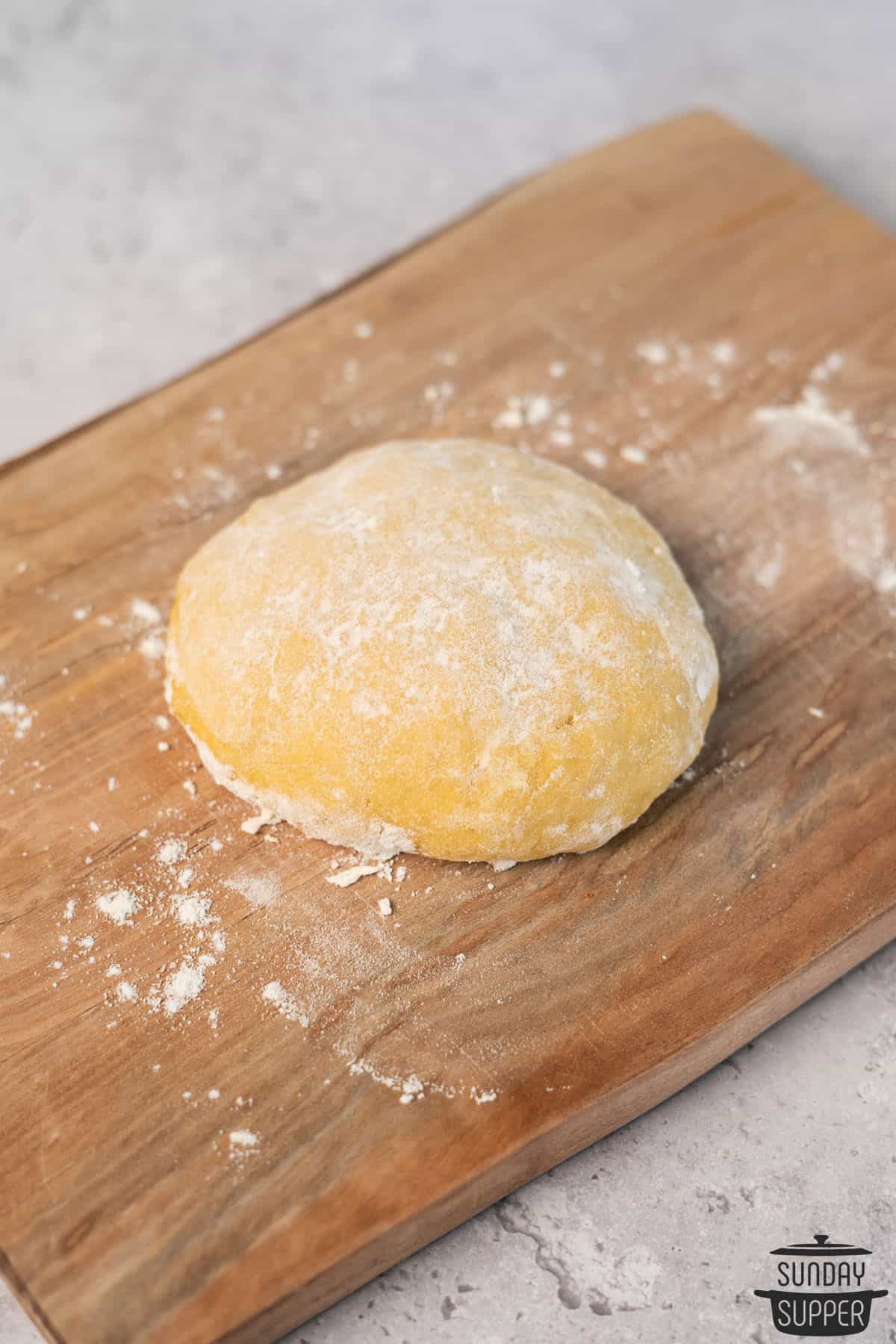
How to Store Fresh Pasta
Making pasta is a long and intensive process, so I like to make it in bulk and store it for later! There are a couple ways to store fresh pasta depending on your freezer space and needs.
- Dried: Drying the fresh pasta means you can store it almost indefinitely without using up freezer space.
- Frozen: Freezing pasta is fast, easy, and great for storing long-term if you have freezer space!
- Refrigerator: You really can't store fresh pasta in the fridge until it's cooked; the eggs don't last well, and the texture will start to suffer. If storing in the fridge, use within 18 hours.
How to Dry Fresh Pasta
- Flour the pasta well, then hang or spread it out on a drying rack. Let it air dry until completely bone dry, at least 24 hours. For faster drying, set a fan up on low and point it at the pasta.
- Once completely dry, gather the pasta up in bags or glass jars and store in the pantry until ready to use.
How to Freeze Fresh Pasta
- Flour the pasta, then lightly dry it by spreading it out on a drying rack. Let it air dry for at least 1 hour, until it's starting to get stiff.
- Form the pasta into "nests" if you're making long pasta like spaghetti or linguini. You can do this by just wrapping the pasta into little rounds; I like to make serving-sized nests so it's easy to portion out the right amount!
- Place the pasta in airtight freezer bags and press out as much air as possible; I recommend immersing the bag in a sink full of water to push the air out, making sure no water gets in the bag.
- Freeze for up to 6 months!
Homemade Egg Pasta Recipe FAQ
Depending on the thickness of the noodles, fresh pasta only needs to be cooked for 1-5 minutes; just until tender! Really, all you're doing is flash-cooking the eggs and flour, which takes very little time.
Frozen, fresh pasta lasts up to 6 months; dried, it lasts forever! Follow my instructions included above for all the steps on properly storing homemade pasta. Just don't refrigerate it, as it doesn't last well and can start growing bacteria.
If your pasta dough isn't rolling out well, it might need to rest for longer! Form it back into a ball and wrap it up in plastic wrap, then let it sit for another 10 minutes. Once it rests longer, try again.
You can make pasta in a stand mixer if you have the right attachments! Mix the dough with a flat beater until it comes together, then knead it for 2 minutes with the dough hook attachment. The rest has to be done by hand!
What to Make with Homemade Pasta
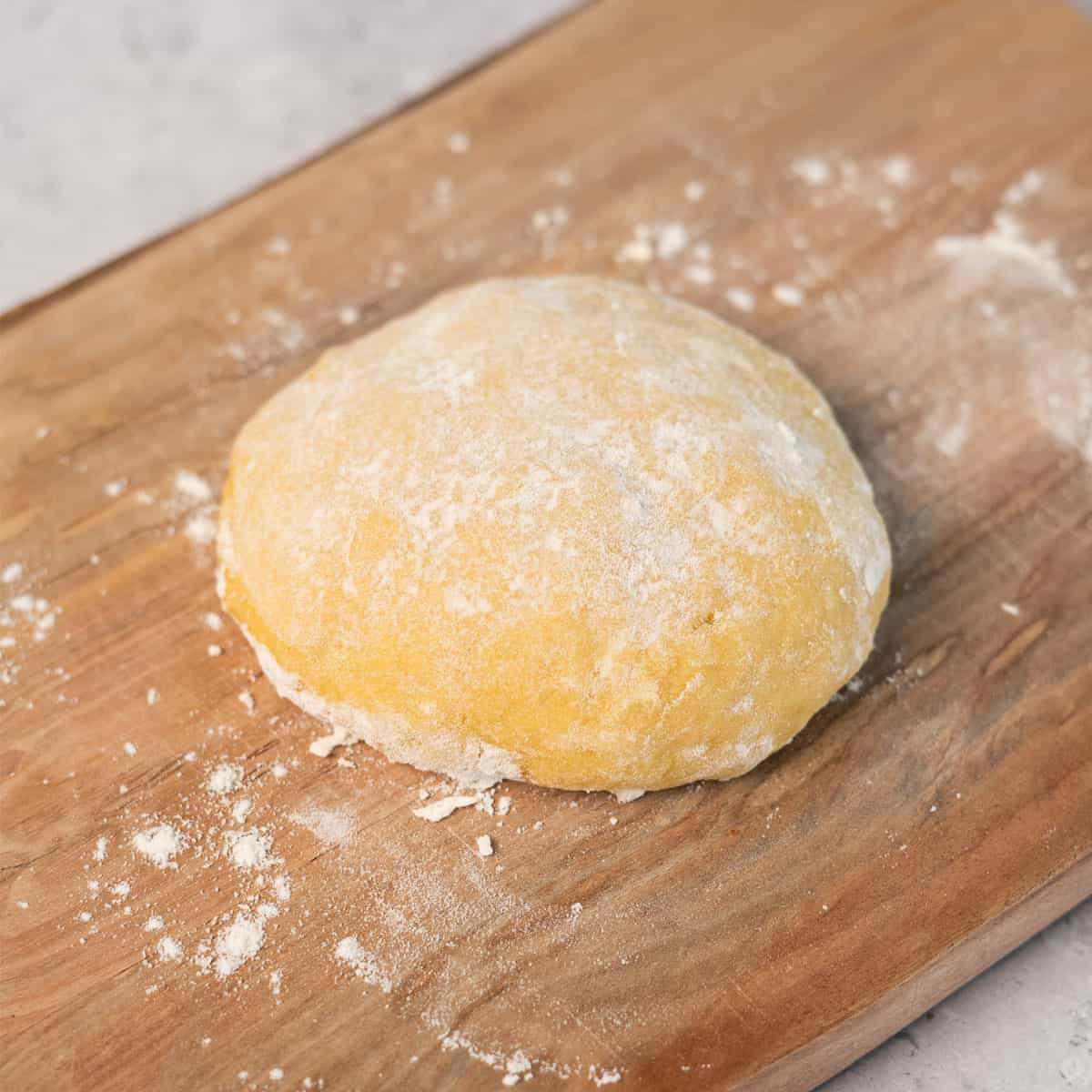
Homemade Pasta Recipe Without a Machine
Video
Equipment
- 1 Fork
Ingredients
- 2 Eggs
- 1½ cups All-purpose flour
- 1 teaspoon Salt
Instructions
- On a clean workspace, gently pour your flour out into a large mound.1½ cups All-purpose flour
- Using your hands, create a large well in the center of your flour. It should be big enough for the eggs to fit without spilling.
- Crack the eggs into the well, then add the salt. Using a fork, whisk the eggs in the middle, careful not to incorporate the flour.2 Eggs,1 teaspoon Salt
- Once the eggs are whisked, slowly start whisking flour into the eggs, without ruining your well. You will slowly see your egg and flour mixture turn into dough, and not be wet anymore.
- Begin kneading your dough with your hands using any extra flour remaining on your workspace. Knead until a ball forms.
- Wrap your dough in plastic wrap tightly, and let it rest for 20-30 minutes.
- Unwrap your dough ball (keep the plastic wrap to the side!), and cut off ¼ of your dough. Wrap the remaining dough up in plastic wrap and set aside.
- With your piece of dough, flatten it out with your hands and lightly dust it with flour.
- Using a rolling pin, roll out your dough until it's very thin. This will take about 30 minutes. Repeat with the remaining ¾ of your dough ball.
- Now your pasta dough is ready to be shaped into your desired shape!
Notes
- Making pasta is messy! Flour gets everywhere, so make sure you wear an apron and get ready to clean the counters. Embrace the mess and have fun!
- Clean the working surface and your rolling pin well! You won't be working on a cutting board; the pasta needs too much space, and will need to be made directly on the counter. Clean it well before you start.
- Flour your rolling pin before starting to roll out the pasta! Otherwise it can stick and make a huge mess.
- When setting dough aside, cover it in plastic wrap. If you don't, it can start to dry out and get crumbly! Make sure to do the same for any cut pasta.
- It's a simple process, but a precise one! Don't get discouraged; keep on trying. Making your own pasta is so, so rewarding once you get it right!




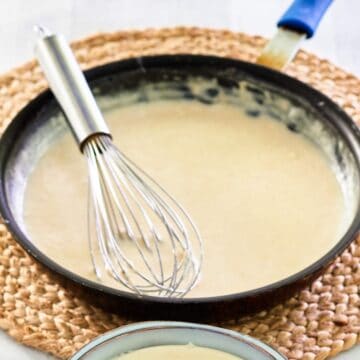
Comments
No Comments